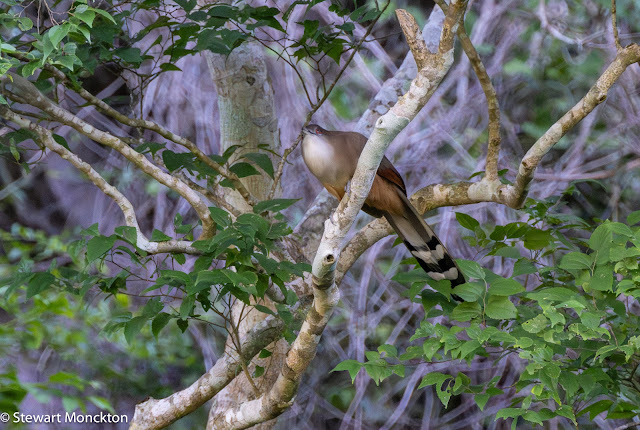When I was away last month I also went to Cuba. Not a place that has really been on my radar in the past, but what a remarkable country. Amazing birds, food, history - and for the most part - great weather.
One of the first birds we found in Cuba were a pair (?) of Great Lizard-Cuckoos (Coccyzus merlini). This bird is only found in the Bahamas and Cuba. The birds we saw were on the mainland of Cuba which make them the sub-species Coccyzus merlini merlini.
Unsurprisingly this species was a life tick for me - and it was a great way to start birding in Cuba.
This bird is a common breeding bird in Cuba, it is 42 to 54 cm long, about half of which is the tail, and weighs about 100 to 155 g. Both sexes have the same plumage, but males are slight larger than females. When they call, the starting phrases seemed similar to the laughing call of Laughing Kookaburra. The call certainly made me do a double take the first time I heard it.
These birds feed on frogs, snakes, birds' eggs, nestlings and large insects. Unlike other cuckoos this species builds its own nest, and incubates two to three of its own eggs.
These birds were rather far away, and often shaded or hidden by foliage, so pictures were not always easy to get.
This is the WBW post that covers Christmas - so I hope you have a good break, see lots of Christmas birds (winter or summer depending on hemisphere) and have a generally good time!
As ever, to join in with WBW click the link below. SM

















































